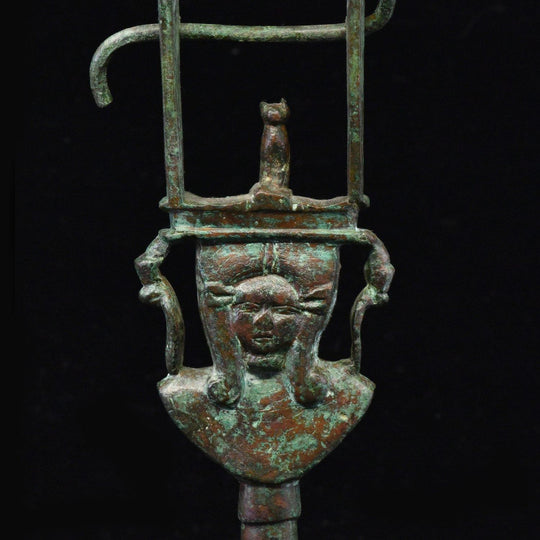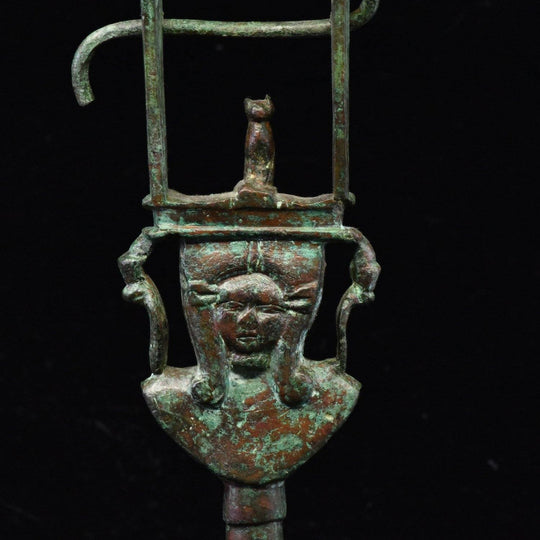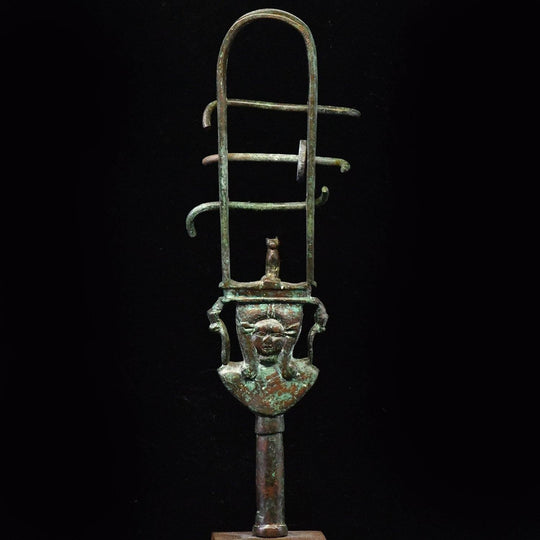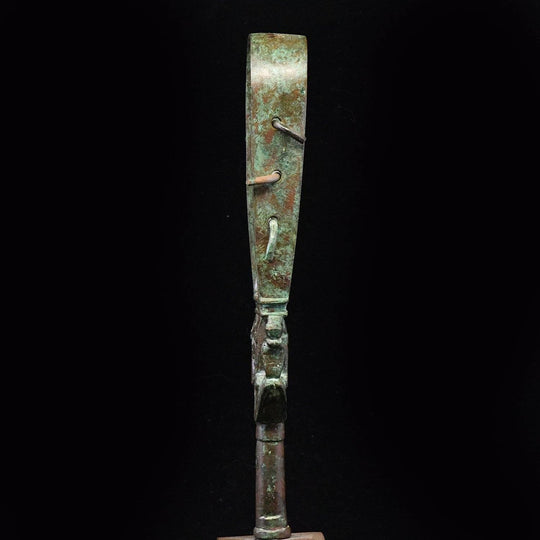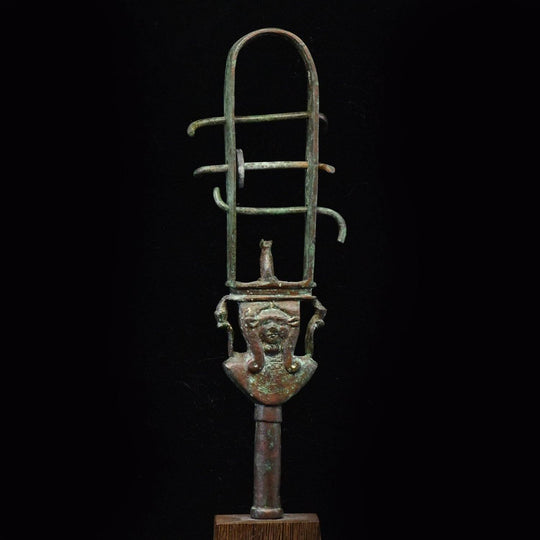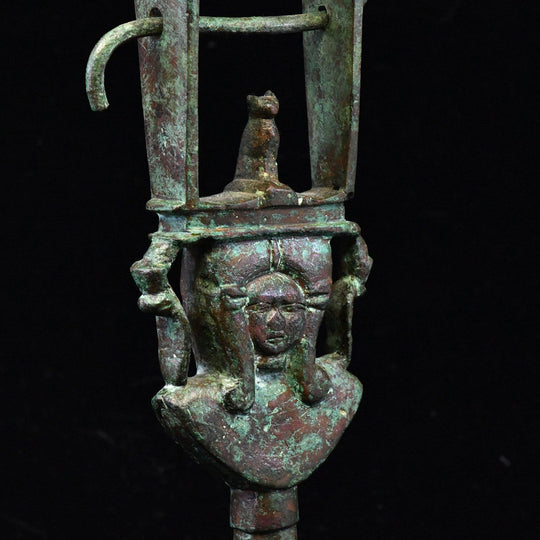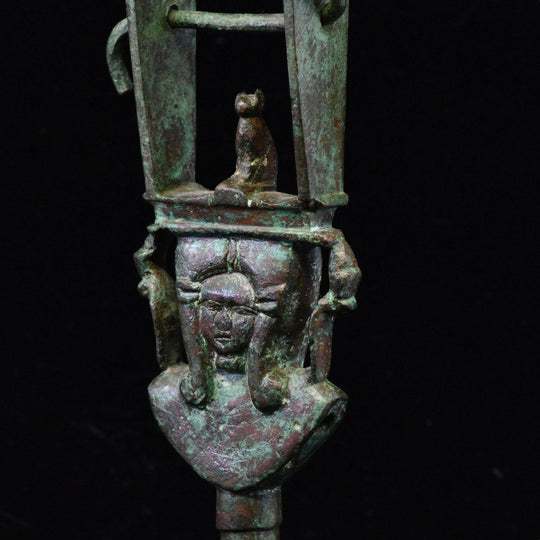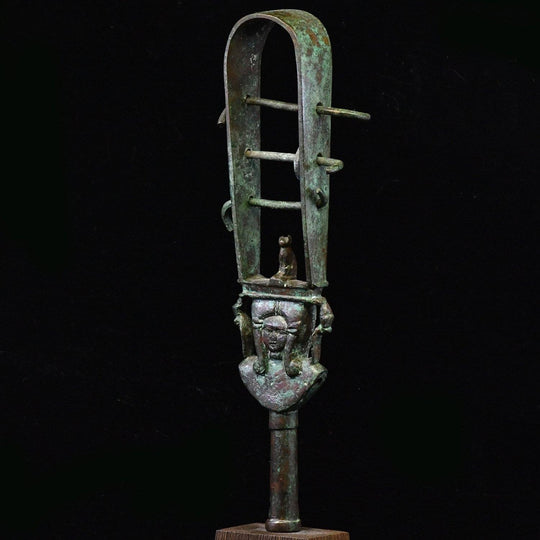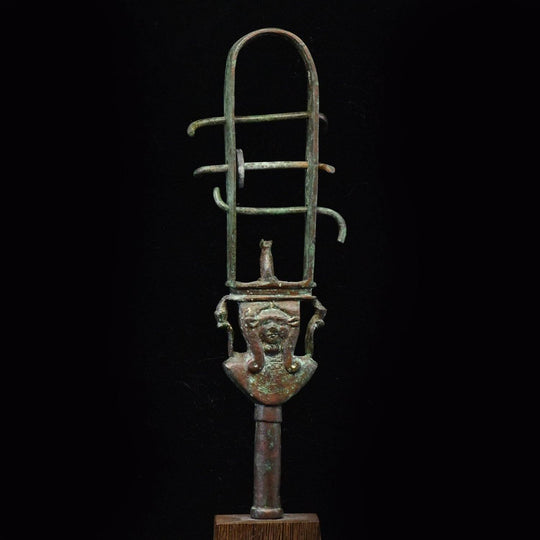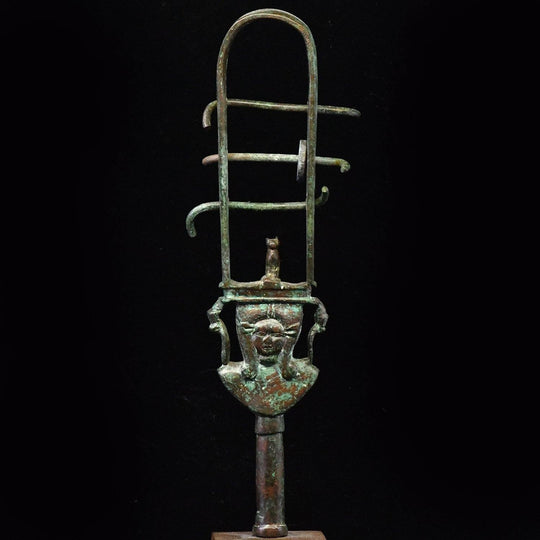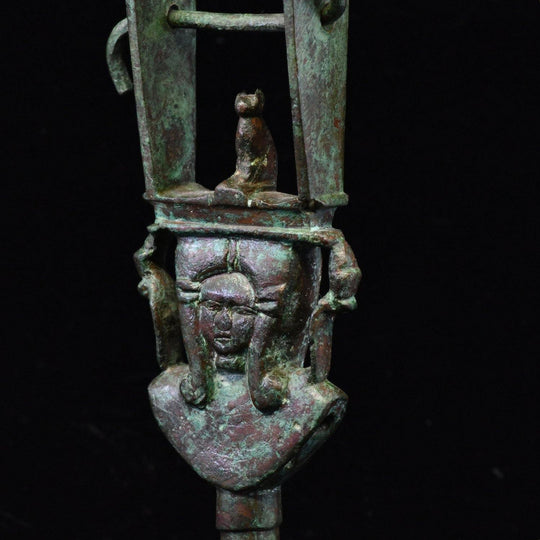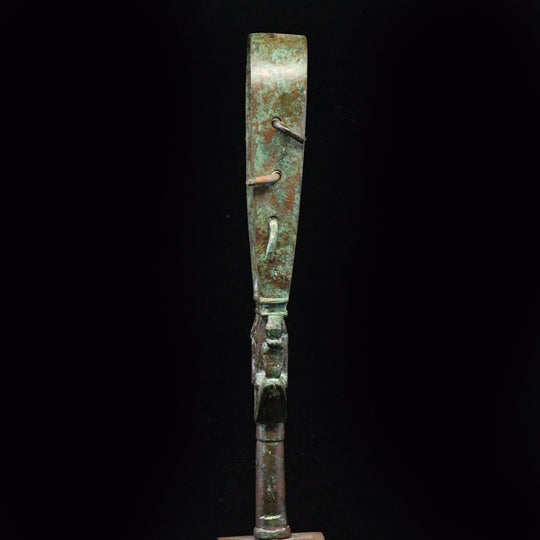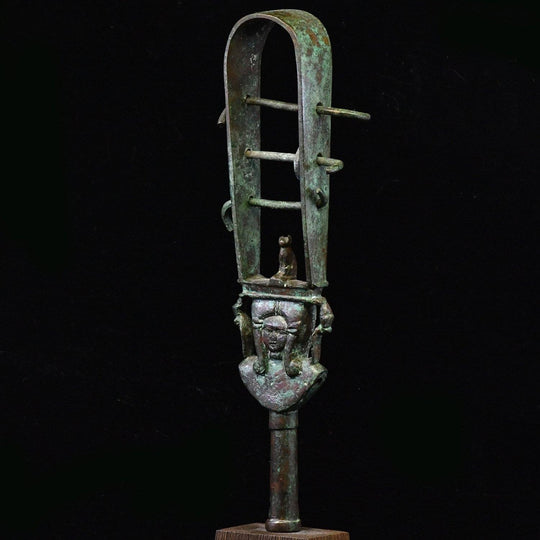EB2002
A sistrum, or sesesh, is an ancient Egyptian sacred percussion instrument held by ancient Egyptian priestesses that were shaken to accompany the chanting during temple rituals, festive processions, religious ceremonies, and when coming into the presence of a deity. It is thought to have imitated the sound of papyrus stalks being shaken, echoing an ancient rite connected with the myth in which the god Horus was raised in secret in a papyrus marsh.
The overall shape of this sistrum resembles the ankh symbol meaning life. The cylindrical handle terminates in the form of the "Bat emblem" which was associated with the goddess Hathor, patroness of music. Here, she wears a wig with curly ends, bovine ears, and is adorned with a large wesekh collar. Sound disks in the form of cymbal-like pieces of bronze, move on three metal bars fitted into holes in the high arch which themselves move, to rattle against one another. In this example, one sound disk still remains. Hathor's shoulders are surmounted by projecting cobras wearing the crowns of Upper and Lower Egypt. At the base of the arch is a seated cat, possibly representing solar associations or the pacifying aspect of the goddess soothed by the sound of the sistrum.
Condition: Some of the sounds disks now missing, otherwise intact and in very good condition overall.
Dimensions: Height: 11 inches (28 cm)
Provenance: Ex. Belgian collection formed in the 1970s, thereafter private Virginia collection, acquired from the NY trade.
Sands of Time provides a lifetime, unconditional guarantee of authenticity and provenance. Every object you purchase from us is accompanied by a Certificate of Authenticity, stating culture, provenance, and age.
Furthermore, we conduct due diligence to ensure the item, to the best of our knowledge, has not been illegally obtained from an excavation, architectural monument, public institution, or private property. Wherever possible, reference is made to existing collections or publications.Wherever possible, reference is made to existing collections or publications.
We ship Tuesday to Friday with FedEx and usually same day if your order is received before 2pm. Within the continental USA, packing, shipping and insurance is free. Depending on size and destination, delivery times range from one to five business days.
If we are shipping this object to you overseas, there is no charge for packing, preparation of all customs paperwork, insurance and carrier fees in compliance with all USA and International customs requirements.
We send overseas shipments with FedEx International Priority which usually means two to three day delivery to Europe and the UK, customs willing but contact us if you have a shipping preference.
Please note: International customers are responsible for all duties and taxes.
